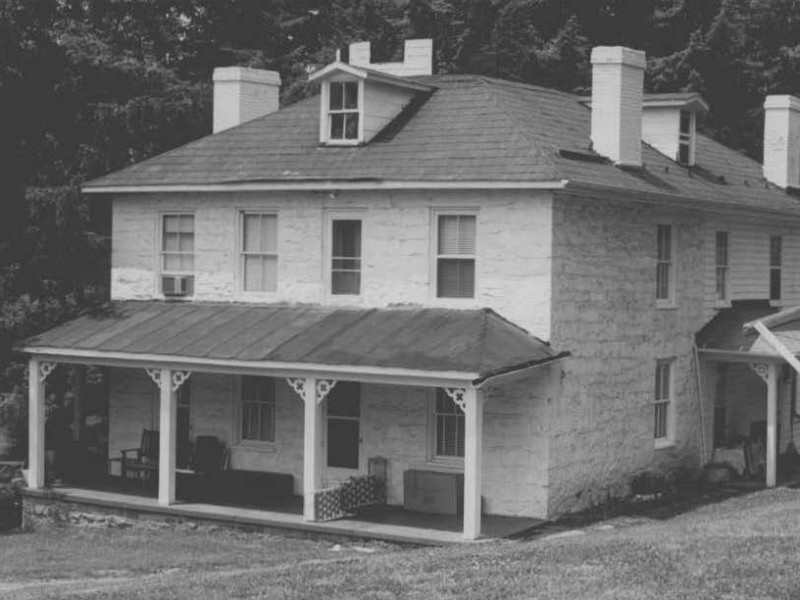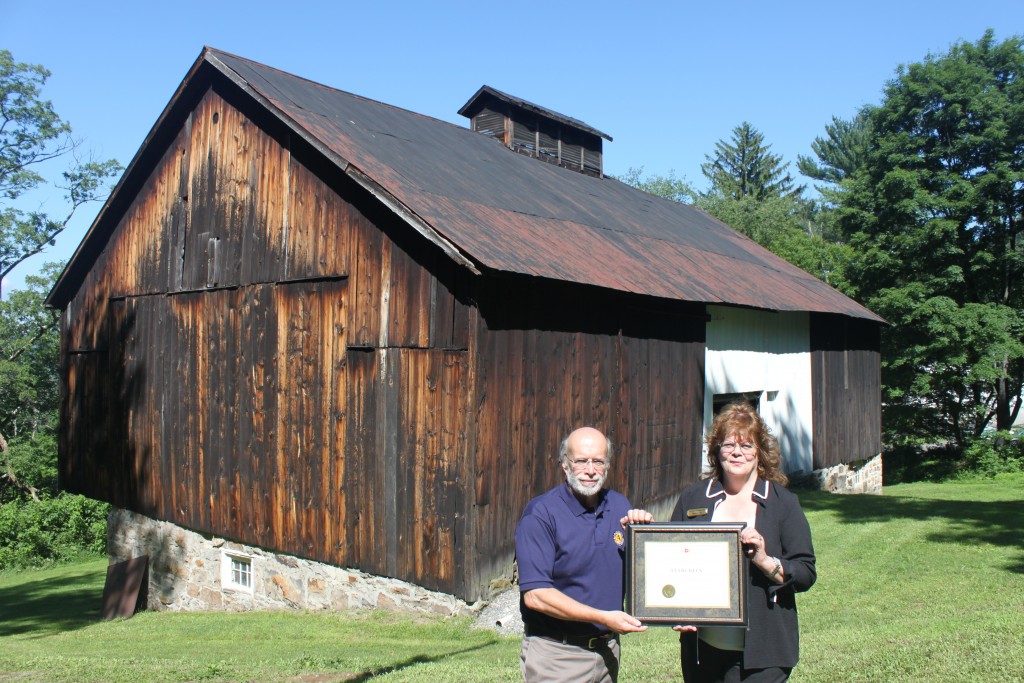Nestled in the hills of Allegany County, the Evergreen Heritage Center preserves early American history from a time when the first settlers migrated westward to mountain land rich in natural resources, fish, and game.

Trimble Hall on the Evergreen property, 1976. Photo from Maryland Historical Trust.
On the Maryland Inventory of Historic Properties since 1976 and added to the National Register in 2015, the Evergreen property is historically significant in terms of its contribution to the successful settlement of Western Maryland beginning circa 1780 when Edward Grimes migrated west from Frederick and built a farm on four fifty-acre “military lots” awarded to him for his Revolutionary War service. By 1794, Mr. Grimes was one of the first County Commissioners in the newly formed County and his son-in-law (also a County Commissioner) was operating the area’s first sawmill. Two other County Commissioners subsequently owned the property: William Ridgeley who filed the first layout of the town of Frostburg and fostered the partnership between the B&O Railroad and the C&O Canal, and George Winter who operated one of the area’s first woolen mills and a nearby inn on America’s first National Road. After the Civil War, in 1869, the property was acquired by the Trimble family, became part of one of the area’s largest farms at over 1100 acres, and was given the name Evergreen for the fledging evergreen trees planted there. All five of these families facilitated the growth of Allegany County, the state of Maryland, and in terms of commerce and transport, the new nation.
Today, the Evergreen Heritage Center continues its work in preservation with Phase 1 of the Evergreen Barn project, the goal of which is to restore and renovate the historic 200 year old Evergreen Barn to create a multi-purpose building to support Evergreen Heritage Center education programs and events while also serving as a showcase of early Western Maryland history. In partnership with local schools, businesses, outreach organizations, and other members of the community, the Evergreen Heritage Center currently provides quality hands-on education programs for over 4800 students and visitors each year and in 2015 received the Richard A. Johnson Award for education excellence from the University of Maryland Center for Environmental Science. The Center was also honored by the Maryland Department of Planning with a 2015 Maryland Sustainable Growth Award for its work in leveraging a historical property for the benefit of the community while serving as a living example of best practices in conservation and preservation.

The Evergreen Heritage Center received an award in 2015.
The Evergreen Barn, which per the Maryland Historical Trust is in “pristine condition”, displays many of the classic architectural features of an 18th-century colonial-style bank barn including hand-hewn broad-axed beams and an open forebay. The barn’s exterior includes an upper barn with a hay wagon and hand-cranked fanning mill – both of which date to the Barn’s continued use in the late 1800s- and the lower barn stables with harnesses still hanging on the wall.
LEARN MORE ABOUT EVERGREEN HERITAGE CENTER
The Evergreen Heritage Center rehabilitation project is supported in part by a grant from Preservation Maryland’s Heritage Fund, with additional support from the Appalachian Regional Commission, the Community Trust Foundation, and community donations. This Heritage Fund Highlight blog series was written by Janice Keene, president of the Evergreen Heritage Center Foundation. To learn more or get involved, contact the Foundation.
-
- Part 1: Two Hundred Years of History
- Part 2: Exploring a Hidden Treasure
- Part 3: Preserving the Past for the Future

